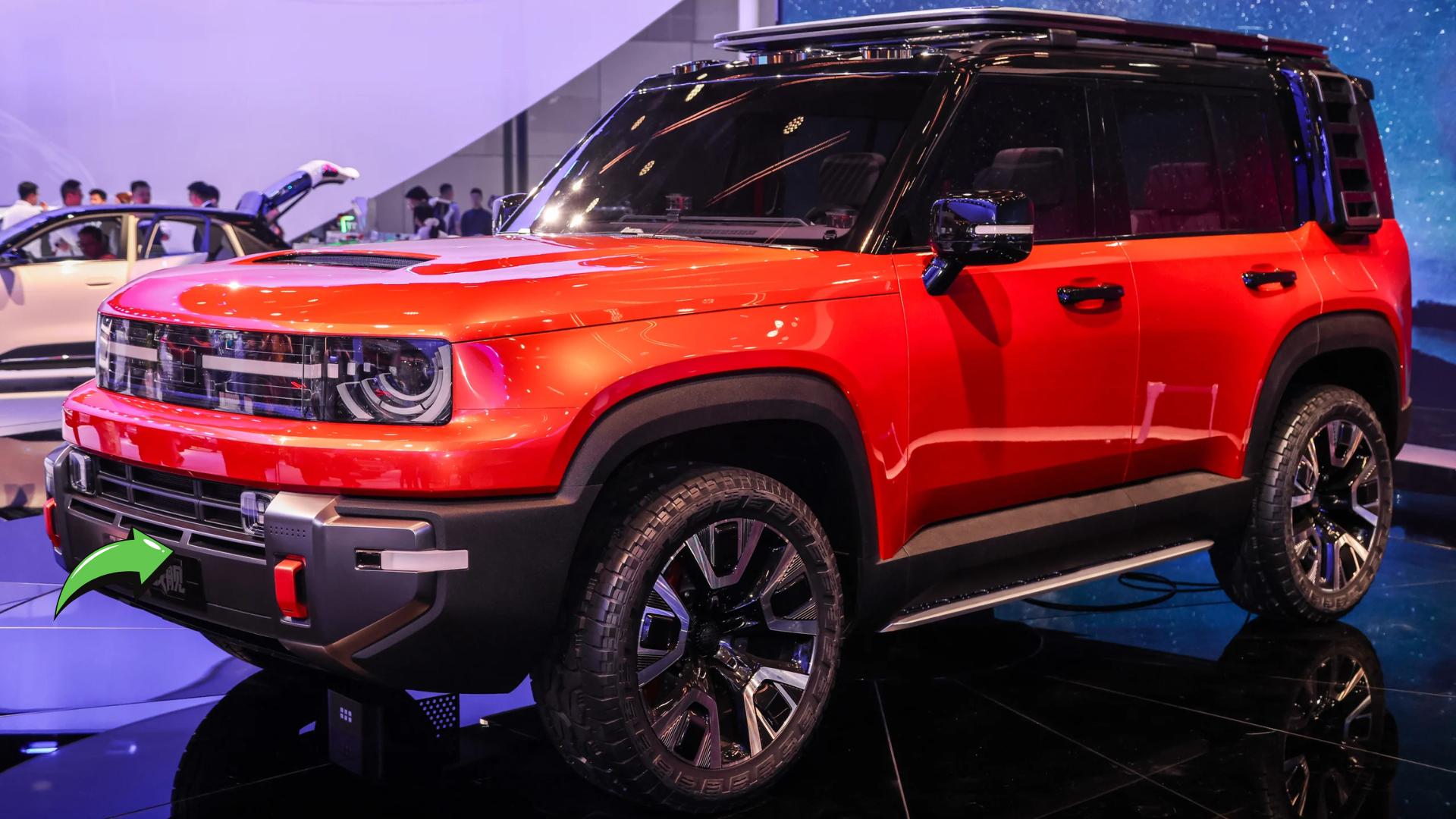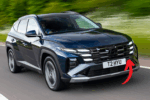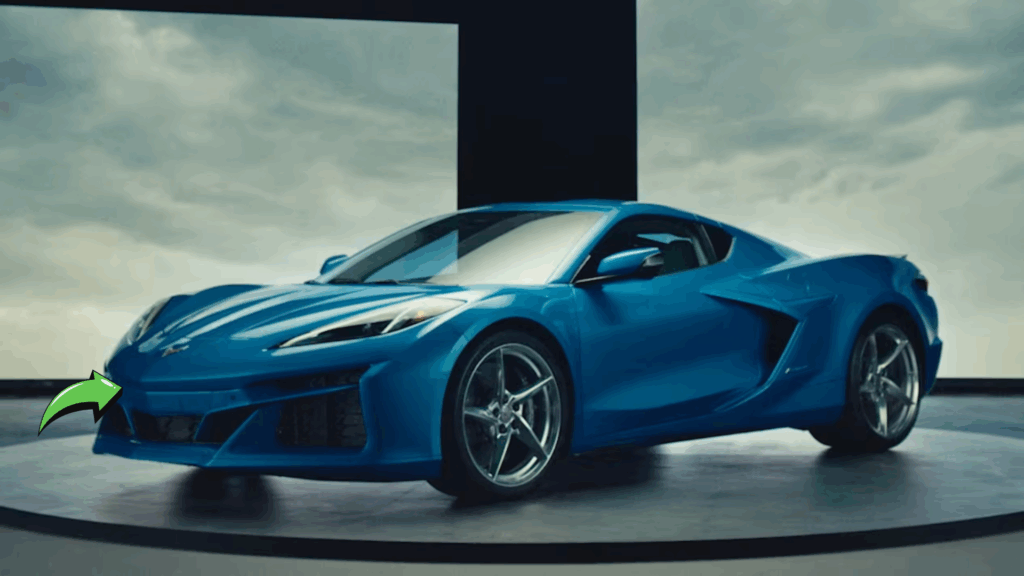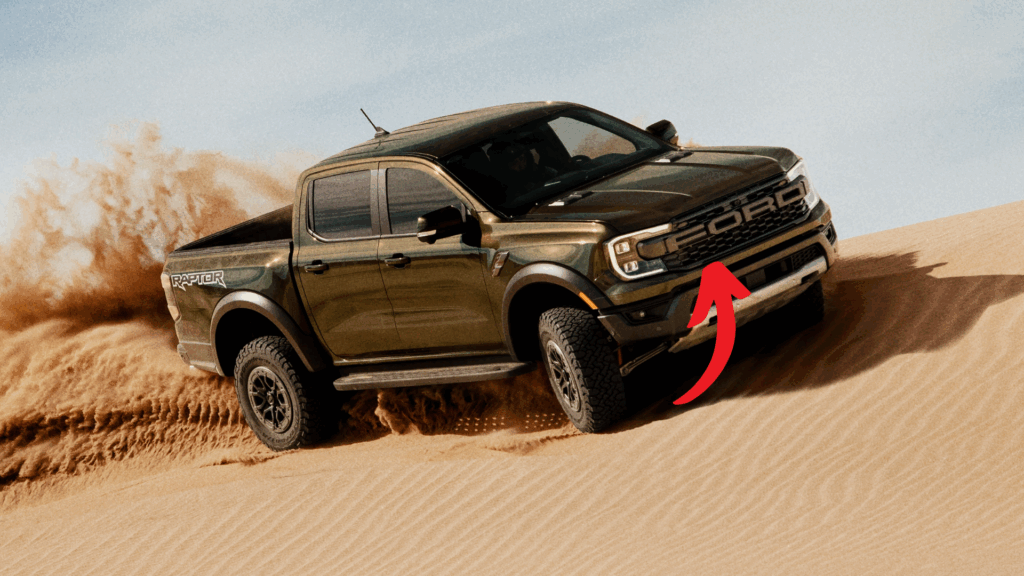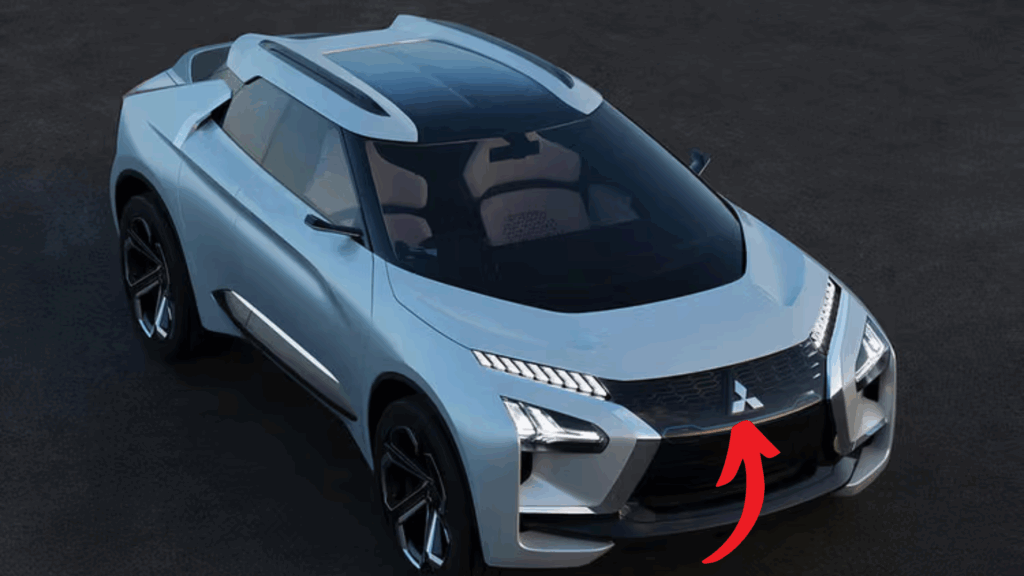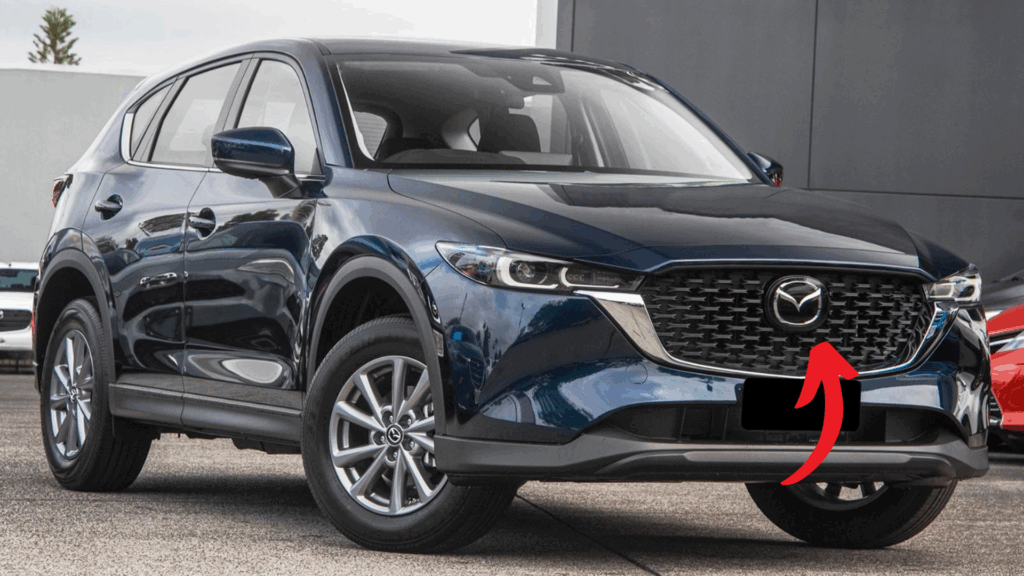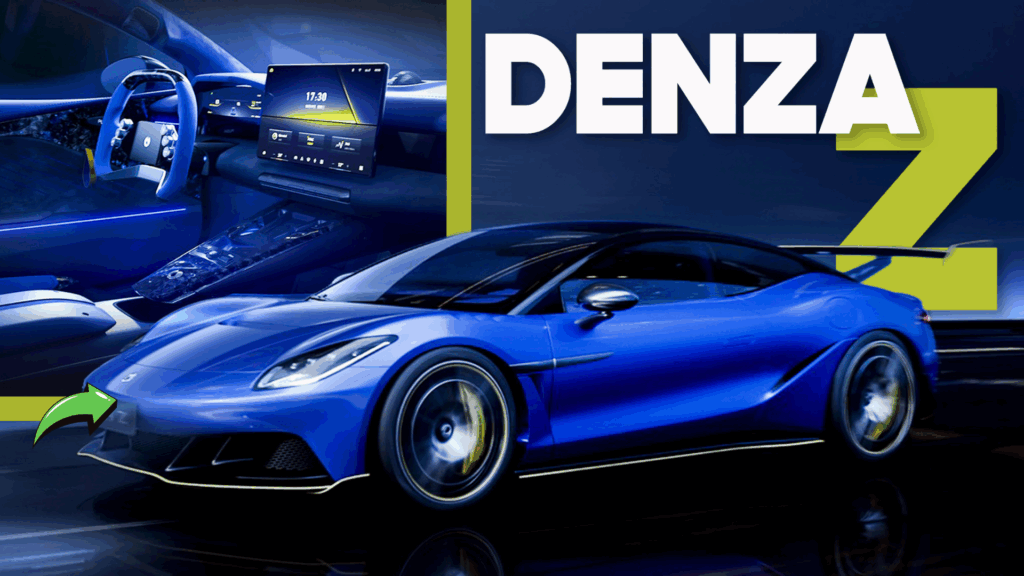I still remember my first encounter with a Toyota Prado back in ’98 – that indestructible beast crawling up a muddy hillside in Malaysia during monsoon season while lesser vehicles (including my rental) sat helplessly bogged down. Some automotive reputations are earned the hard way, through decades of proving themselves in the harshest conditions imaginable.
That’s what makes Geely’s audacious move so fascinating to watch unfold.
Table of Contents
Chinese Automaking: From Laughingstock to Legitimate Contender
Let’s be brutally honest – Chinese cars were once the punchline of automotive jokes. I’ve been covering this industry for 22 years, and I’ve watched the progression first-hand.
Those early export attempts were truly awful machines. I test-drove a Geely CK back in 2007, which felt like it might disintegrate if you hit a pothole too hard. The interior plastics reeked of chemicals, and the engine made sounds that still haunt my dreams.
But things change. Boy, do they change.
My cousin bought a Geely Coolray last year – against my explicit advice, I might add – and I’ve had to eat my words. The fit and finish would make some German manufacturers nervous, and the driving dynamics were genuinely impressive.
This rapid evolution explains why Toyota executives are privately (and sometimes not-so-privately) getting nervous about what’s coming out of Hangzhou these days. The Galaxy Cruiser represents something unprecedented – a direct assault on one of Toyota’s most profitable and well-established models.
Behind the Scenes: How Geely Built Their Prado Fighter
My industry contacts tell me Geely’s approach to developing the Galaxy Cruiser was methodical to the point of obsession. They didn’t just benchmark the Prado; they lived with it.
The project lead – a brilliant engineer poached from a German luxury brand who asked to remain unnamed – reportedly purchased seven different Prados from various model years. His team dismantled them completely, cataloging every component and testing them to failure.
“We spent three years just understanding what makes the Prado special before we designed a single part,” he told me over noodles at a roadside stand near Geely’s proving grounds last fall. “You can’t fake that kind of knowledge.”
This methodical approach shows in the final product. The Galaxy Cruiser doesn’t reinvent the wheel – it keeps what works about traditional off-roaders while intelligently updating the formula for modern expectations.
Also Read: BYD Reveals Denza Z Concept, a Stunning Electric Porsche 911 Rival
Design That Turns Heads (For the Right Reasons)
The Galaxy Cruiser looks… well, it looks proper. There’s no getting around it. While early Chinese designs often suffered from identity crises – trying to look simultaneously like BMW, Mercedes, and Lexus – Geely has found its voice.
The front end has presence without resorting to the “angry robot” aesthetic that’s infected so many modern SUVs. The proportions are classical but not derivative.
During my preview drive in Inner Mongolia, the vehicle drew considerable attention from locals and tourists alike. One American overlander I met at a fuel stop walked around it three times before asking, “Wait, that’s a Geely? For real?”
That reaction seems to be exactly what Geely is aiming for – surprise followed by grudging respect. The design manages to communicate capability without shouting about it, which feels refreshingly mature.
Interior That Makes Toyota Look Lazy (Sorry, Not Sorry)
I’ve spent countless hours in the current Prado’s cabin – including a memorable two-week expedition through Botswana, where it served as both transport and accommodation. It’s functional, sure, but exciting? Innovative? Not exactly words that spring to mind.
The Galaxy Cruiser’s interior feels like it was designed this decade, which shouldn’t be a revolutionary concept but somehow is. The material quality genuinely shocked me, particularly the textured surfaces that manage to look premium while being practically impervious to scratches (I may have tested this accidentally-on-purpose with my watch).
The seats deserve special mention. Developed with input from orthopedic specialists, they remain comfortable even after 8+ hours behind the wheel – something I verified during a grueling day crossing the Gobi. They’re wrapped in a stain-resistant fabric that somehow repelled the coffee I inevitably spilled.
The tech integration feels thoroughly considered rather than tacked-on. The off-road displays provide genuinely useful information presented clearly, unlike some competitors’ systems that seem designed more for marketing materials than actual trail use.
Tech That Makes Sense Off-Road
I’ve grown deeply skeptical of automotive technology that exists purely for spec-sheet bragging rights. The Galaxy Cruiser’s tech suite, however, feels developed by people who go off-road rather than marketing departments.
The “Terrain Recognition System” initially struck me as gimmicky until I experienced it navigating a particularly treacherous rocky section near Hoh Xil. The vehicle preemptively adjusted suspension settings as cameras and sensors identified changing surfaces ahead, not just reacting to wheel slip after it occurred.
Is this necessary for most owners? Probably not. Is it impressive technology that shows a serious engineering commitment? Absolutely.
The integrated recovery assistance feature proved unexpectedly useful when a less-capable vehicle in our convoy became stuck. The system provided specific guidance for recovery techniques based on the situation, again, showing that actual off-road experience informed the development.
Performance: Where Numbers Only Tell Half the Story
On paper, the Galaxy Cruiser’s specs look impressive, particularly the hybrid powertrain that outmuscles Toyota’s diesel while offering better efficiency. But off-roaders know that statistics rarely tell the whole story.
What matters is how systems work together in real-world conditions, and here’s where Geely deserves genuine credit. During testing in temperatures ranging from -20°C to +45°C, the drivetrain components showed remarkable resilience.
The turbocharged base engine suffers minimal lag – far less than I expected – and delivers power with a surprisingly linear character. It lacks the distinctive torque curve of the Prado’s diesel, but compensates with better responsiveness across the rev range.
Where the hybrid system truly shines is in technical off-road situations. The instant torque from the electric motors allows for precisely controlled crawling without constantly riding the brake and throttle. During one particularly technical rock section, this precision made previously challenging obstacles almost trivial.
Chassis Dynamics: Surprise and Delight
Nobody expects an off-road-focused SUV to handle like a sports car on tarmac, but the Galaxy Cruiser manages a convincing impression on winding roads. Body control is notably superior to the Prado, with less pronounced lean during cornering.
The steering – often a weak point in off-road vehicles – provides reasonable feedback without excessive weight. It’s calibrated for precision rather than artificial sportiness, which suits the vehicle’s character perfectly.
Ride quality represents perhaps the most significant advantage over the Toyota. Where the Prado can feel decidedly truck-like on rough pavement, the Galaxy Cruiser’s adaptive suspension delivers remarkable compliance without surrendering control.
During high-speed dirt road sections, the chassis showed impressive composure over washboard surfaces that typically induce chattering and skipping in less sophisticated designs. The suspension’s ability to absorb successive impacts while maintaining directional stability instills confidence in conditions where many competitors feel nervous.
By the Numbers: Galaxy Cruiser vs. Prado
Sometimes you just need to see the raw data side by side. Here’s how these two off-road titans compare:
| Feature | Geely Galaxy Cruiser | Toyota Prado | Edge Goes To |
|---|---|---|---|
| Base Engine | 2.0L Turbo (254 hp/258 lb-ft) | 2.8L Diesel (201 hp/369 lb-ft) | Tie (different strengths) |
| Optional Engine | 1.5L Hybrid (362 hp/391 lb-ft) | None currently offered | Galaxy Cruiser |
| Transmission | 8-speed Automatic | 6-speed Automatic | Galaxy Cruiser |
| Ground Clearance | 220mm | 215mm | Galaxy Cruiser (barely) |
| Water Fording | 800mm | 700mm | Galaxy Cruiser |
| Approach Angle | 31° | 31° | Tie |
| Departure Angle | 27° | 25° | Galaxy Cruiser |
| Turning Circle | 11.6m | 11.4m | Prado |
| Off-road Tech | Terrain Recognition, Recovery Assistant | Multi-Terrain Select, Crawl Control | Galaxy Cruiser (more advanced) |
| Fuel Economy (Hybrid) | 29 MPG combined | N/A | Galaxy Cruiser |
| Fuel Economy (ICE) | 23 MPG combined | 21 MPG combined | Galaxy Cruiser |
| Starting Price | ~$38,000 | ~$42,000 | Galaxy Cruiser |
| Warranty | 7-year/150,000 km | 3-year/100,000 km | Galaxy Cruiser |
| Proven Reliability | Unproven | Legendary | Prado (by default) |
Looking at these numbers, it’s easy to see why Toyota might be nervous. On paper, the Galaxy Cruiser matches or exceeds the Prado in nearly every measurable category – and does so at a lower price point.
But numbers don’t capture everything. The Prado’s three decades of proven durability remain its strongest selling point – one that no new entrant can claim, regardless of engineering prowess or warranty promises.
The Real-World Ownership Experience
Here’s where things get complicated. My week with the Galaxy Cruiser was enlightening, but it can’t predict how the vehicle will hold up after 200,000 hard kilometers.
Toyota’s global service network remains unmatched – a critical consideration for those who venture far from civilization. I’ve personally experienced the miracle of finding Prado parts in tiny Moroccan villages and remote Siberian towns.
Geely knows this is their Achilles’ heel. They’re addressing it aggressively by establishing service centers in key off-road destinations and creating a flying doctor program that sends technicians to remote locations when needed. It’s an ambitious strategy, but one that will take years to fully implement.
The warranty coverage – substantially more generous than Toyota’s – suggests confidence in the product’s durability. My contacts at supplier companies who provided components for both vehicles privately admit the Galaxy Cruiser’s build quality equals or exceeds the Prado’s current standards.
Real Talk: Who Should Buy This Thing?
After spending significant time with both vehicles, I’ve developed some strong opinions about who should consider the Galaxy Cruiser instead of the default Prado choice.
If you’re planning a multi-year, around-the-world expedition through remote regions, Toyota’s proven track record and global parts availability probably still give it the edge. There’s immense value in choosing the vehicle that local mechanics everywhere know how to fix with basic tools.
For everyone else? The Galaxy Cruiser makes a compelling case. The technology gap is substantial, the performance advantages are meaningful, and the value proposition is undeniable.
I particularly recommend it for those who use their vehicles for weekend adventures while still needing comfortable daily transportation. The superior on-road manners and modern amenities make the weekday commute significantly more pleasant without sacrificing weekend capability.
The Environmental Angle You Probably Haven’t Considered
Something that deserves more attention is the environmental impact comparison. The hybrid Galaxy Cruiser produces significantly fewer emissions during operation – about 35% less CO2 than the diesel Prado when measured on a tank-to-wheel basis.
However, manufacturing footprint matters too. Toyota’s established production processes have been optimized for efficiency over decades, while Geely’s newer facilities incorporate more renewable energy but haven’t benefited from the same long-term refinement.
For environmentally conscious buyers, the calculation should include both operational and manufacturing impacts. Based on my research, the Galaxy Cruiser’s hybrid variant would need approximately 18 months of typical driving to offset its slightly larger manufacturing footprint through lower operational emissions.
The Challenger Has Arrived
The days when established manufacturers could dismiss Chinese competitors as mere copycats are long gone. The Galaxy Cruiser represents something truly significant – not just a competitor to the Prado, but in some ways, it’s superior.
Does this mean Toyota should panic? Not exactly. The Japanese giant has shown remarkable resilience throughout its history, adapting to competitive threats with thoughtful evolution rather than reactive panic. The next Prado generation will undoubtedly address many of the advantages the Galaxy Cruiser currently enjoys.
What’s undeniable is that Geely has forced Toyota’s hand. The comfortable monopoly Toyota has enjoyed in many markets for serious off-road SUVs is facing its first credible challenge in decades.
For consumers, this competition can only be positive. It will drive innovation, restrain pricing, and ultimately deliver better vehicles regardless of which badge you prefer.
As for me? I’m planning a three-week expedition through Kazakhstan next summer. My vehicle of choice might surprise you – I’ve put a deposit down on a Galaxy Cruiser. Maybe I’m crazy, but I’ve always preferred the underdog. I’ll let you know how it holds up.
Straight-Talking FAQs
Will the Galaxy Cruiser actually be as reliable as a Prado in the long run?
Nobody knows for sure – not even Geely. The 7-year warranty suggests confidence, but only time will tell if these vehicles are still running strong after 300,000km.
Can I find parts for the Galaxy Cruiser if I break down in rural areas?
Currently? That’s a legitimate concern. Geely is rapidly expanding its service network, but coverage remains limited compared to Toyota’s global presence.
Does the hybrid system compromise off-road ability?
Surprisingly, no. The electrical components are well-protected, and the instant torque actually improves control in technical situations. Battery protection exceeds industry standards.
Why is the Galaxy Cruiser so much cheaper if it’s better?
Brand premium is real. Toyota charges more because it can, thanks to decades of reputation-building. Geely needs competitive pricing to overcome skepticism and gain market share.
